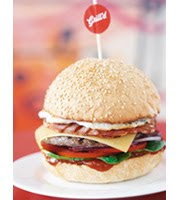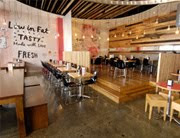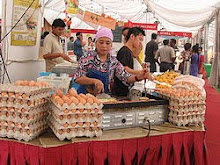The Global Fast Food industry profile is an essential resource for top-level data and analysis covering the fast food industry. It includes detailed data on market size and segmentation, plus textual and graphical analysis of the key trends and competitive landscape, leading companies and demographic information.
Scope
* Contains an executive summary and data on value, volume and/or segmentation
* Provides textual analysis of the industry’s recent performance and future prospects
* Incorporates in-depth five forces competitive environment analysis and scorecards
* Includes a five-year forecast of the industry
* The leading companies are profiled with supporting key financial metrics
* Supported by the key macroeconomic and demographic data affecting the market
Highlights
* Detailed information is included on market size, measured by value and/or volume
* Five forces scorecards provide an accessible yet in depth view of the market’s competitive landscape
Why you should buy this report
* Spot future trends and developments
* Inform your business decisions
* Add weight to presentations and marketing materials
* Save time carrying out entry-level research
Market Definition
The fast food market is defined as the sale of food and drinks for immediate consumption either on the premises or in designated eating areas shared with other foodservice operators, or for consumption elsewhere.
Datamonitor's definition excludes sales through vending machines and is restricted to sales in specific foodservice channels (please see channel definitions below). All market values are given in Operator Buying Prices that is the amount spent by foodservice operators on the food and drink that they serve and not the amount the consumers spend on food and drinks (Operator Selling Prices - OSPs) in these channels.
The difference is the mark up the foodservice operator adds in order to cover their other costs and generate a profit. This therefore values the market in terms of the amount of money for which food and drinks manufacturers are competing. All currency conversions were performed using constant 2008 average annual exchange rates.
Market volumes are classed as the total number of visits by individuals to foodservice locations that involve the consumption of either food. Multiple purchases made during the same visit are counted as one transaction.
The purchase of drink with food in the same location in the same visit is also considered as one transaction, not two. The market is broken down in to four segments: Quick Service Restaurants (QSR), Takeaways, Mobile & Street Vendors and Leisure Locations. QSR's ares defined as: locations where the primary function is to provide full meals but where table service is not offered.
Takeaways are defined as: establishments that provide freshly prepared food for immediate consumption and where typically 80% or more of revenues come from consumers who take the food off the premises to consume.
Mobile & street vendors are defined as: Either individual mobile stalls or vans that offer a limited range of freshly prepared food as well as beverages. Leisure locations are defined as: locations serving food and drinks for immediate consumption on premises within leisure outlets (such as Cinemas, Theatres, Racecourses etc.) that the Leisure operator owns and operates itself.
For the purpose of this report the global figure is deemed to comprise of the Americas, Asia-Pacific and Europe.
The Americas comprises Argentina, Brazil, Canada, Chile, Colombia, Mexico, Venezuela, and the US.
Europe comprises Belgium, the Czech Republic, Denmark, France, Germany, Hungary, Italy, Netherlands, Norway, Poland, Romania, Russia, Spain, Sweden, the Ukraine and the United Kingdom.
Asia-Pacific comprises Australia, China, Japan, India, Singapore, South Korea and Taiwan.
Wednesday, September 16, 2009
Subscribe to:
Post Comments (Atom)
















No comments:
Post a Comment